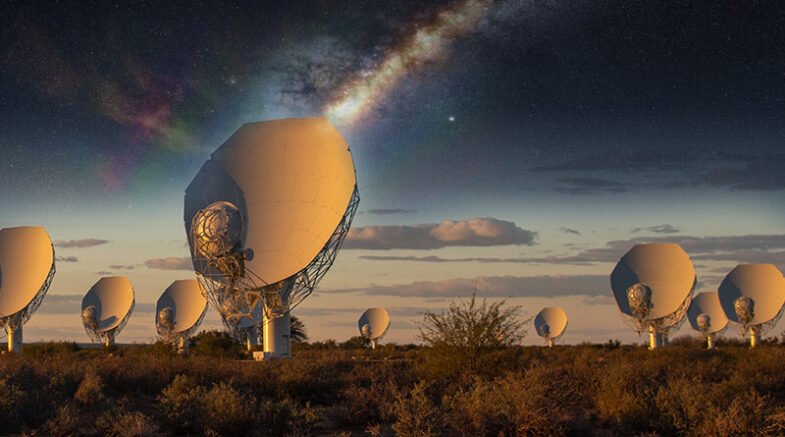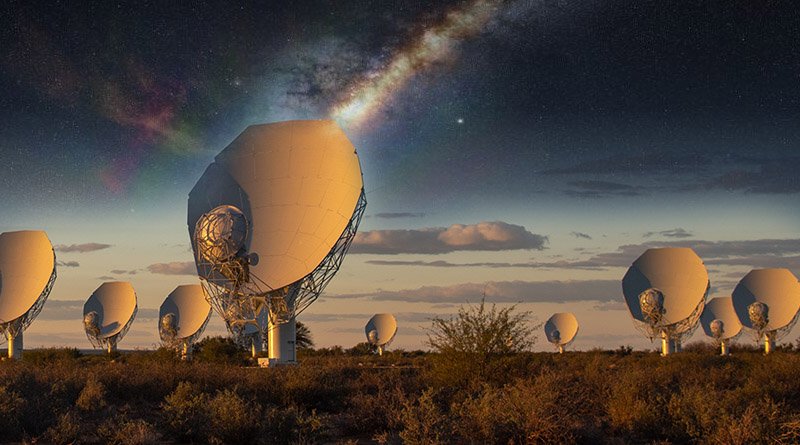A wealth of data, including unprocessed data from the MeerKAT radio telescope in the Northern Cape province of South Africa, is available to scientists.

Around the world, brand-new telescopes with previously unheard-of sensitivity and resolution are being unveiled, including the James Webb Space Telescope in space and the Giant Magellan Telescope in Chile. This implies that a wealth of data, including unprocessed data from the MeerKAT radio telescope in the Northern Cape province of South Africa, is available to scientists.
That will completely fill the hard drive of a laptop computer. The MeerKAT system consists of 64 sizable antenna dishes. It studies the evolution of the universe and everything in it, including galaxies, using radio signals from space.
It is claimed that each dish produces as much data in one second as a DVD. Astronomers are using machine learning to process this data more quickly and accurately than they could have done manually. It may come as a surprise to learn that, despite our growing reliance on computers, finding rare or novel astrophysical phenomena has always solely depended on human inspection of the data.
In essence, machine learning is a collection of algorithms created to automatically identify patterns and models in data.
“We astronomers also design algorithms to watch out for anomalies that don’t fit known parameters or “labels” because we are unsure of what we will find — we don’t know what we don’t know. My coworkers and I were able to find a previously missed object in MeerKAT data using this method. Seven billion light years separate it from Earth (a light year is a measure of how far light would travel in a year),” said Michelle Lochner, a Senior Lecturer in Astronomy, University of the Western Cape.
He further stated that, ” According to what we currently know about the object, it possesses many characteristics of a “odd radio circle” (ORC). By virtue of their peculiar, ring-like structure, odd radio circles can be distinguished. Since the first discovery in 2019, only a small number of these circles have been found, so little is known about them at this time. Our potential odd radio circle, which we’ve named SAURON, is described in a new paper as a steep and uneven ring of non-thermal radiation.”
“To our knowledge, SAURON is the first scientific finding based on machine learning that was made using MeerKAT data.”
According to Michelle Lochner,” New discoveries are crucial for challenging our understanding of the cosmos in addition to being incredibly exciting. We may need to adjust how we view the universe if these new objects contradict our theories regarding how galaxies form and change. Science advances due to new findings of anomalous astrophysical objects.”
